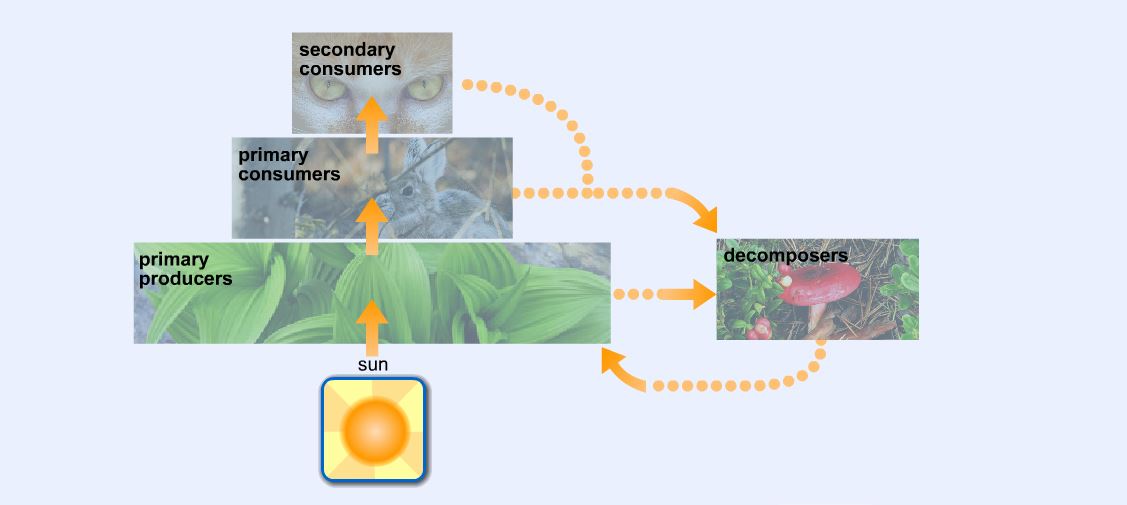 |
| Previous Image | Next Image |
| Description: All of these relationships between different species are founded on one thing: energy. Organisms get food in order to get energy, which is used by the organism for growth, maintaining health, and reproduction. We can classify the members of a community according to how they obtain food. Producers 'produce' their own food. Most producers use sunlight to perform photosynthesis in order to make sugar. The producer then breaks down the sugar, much in the same way as animals, to get energy. Plants, algae, and some bacteria are examples of producers. Consumers 'consume' other organisms as food. Some consumers eat parts of an organism, such as leaves or fruit, while other consumers will eat a whole organism. All animals are consumers. Decomposers get their food from breaking down the matter in dead organisms or waste products. Decomposers ensure that the energy and nutrients that are locked in dead matter are recycled back into the environment. Fungi and most bacteria are examples of decomposers. All of these classifications can be used to generate a flow chart of energy from one group of organisms to another. This flow chart, also called a food chain, shows the flow of nutrients and energy between organisms. At the start of most food chains, is the sun. The energy originates from the sun, and plants are able to convert the sun's energy into food that can be utilized by the other members of the ecosystem. We can describe how close an organism is to this primary energy source with a hierarchy of levels called trophic levels. The first trophic level is made up of primary producers: the plants that produce their own food. Primary consumers make up the second trophic level. These are the herbivores, organisms that eat producers. The next trophic level consists of carnivores, also called secondary consumers, which are the organisms that eat primary consumers. There can be many more consumers in a community. It is not uncommon for smaller carnivores to be eaten by larger carnivores. These larger carnivores are called tertiary consumers. If a carnivore eats the tertiary consumer, it is called the quaternary consumer and so on. Decomposers carry a special spot in the food chain. Because they obtain their nutrients by breaking down dead plant and animal matter, all other trophic levels in the food chain go to the decomposers. Combining up all of the food chains within a community, including producers, consumers and decomposers, gives us a food web. Note that an ecosystem is nowhere near 100% efficient in its energy flow. Every time we move to a higher trophic level, only a small fraction of the energy is passed on and incorporated into the bodies of those organisms. This is called an energy pyramid. Picture Stats: Views: 283 Filesize: 47.26kB Height: 505 Width: 1127 Source: https://biology-forums.com/index.php?action=gallery;sa=view;id=41365 |
